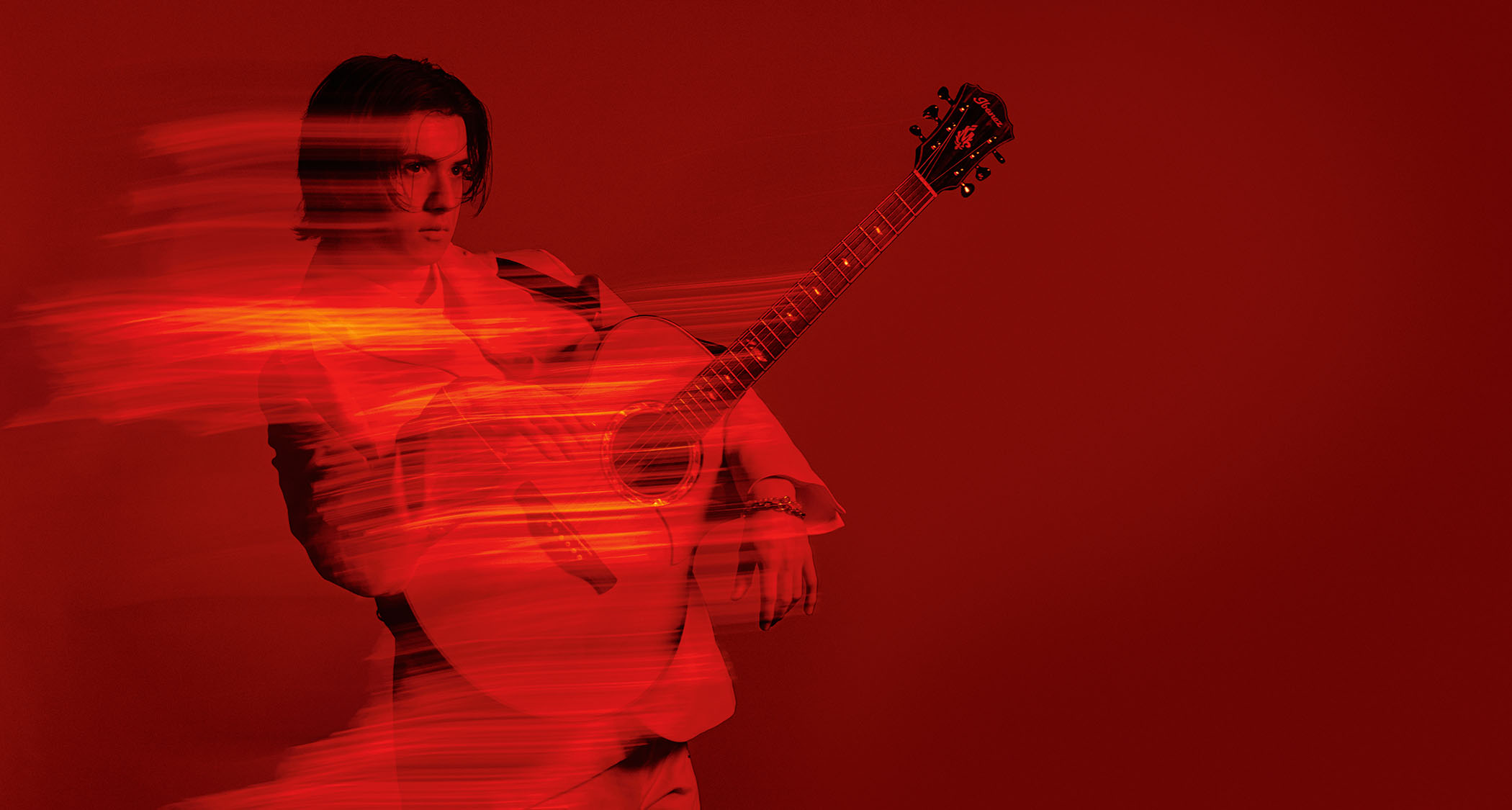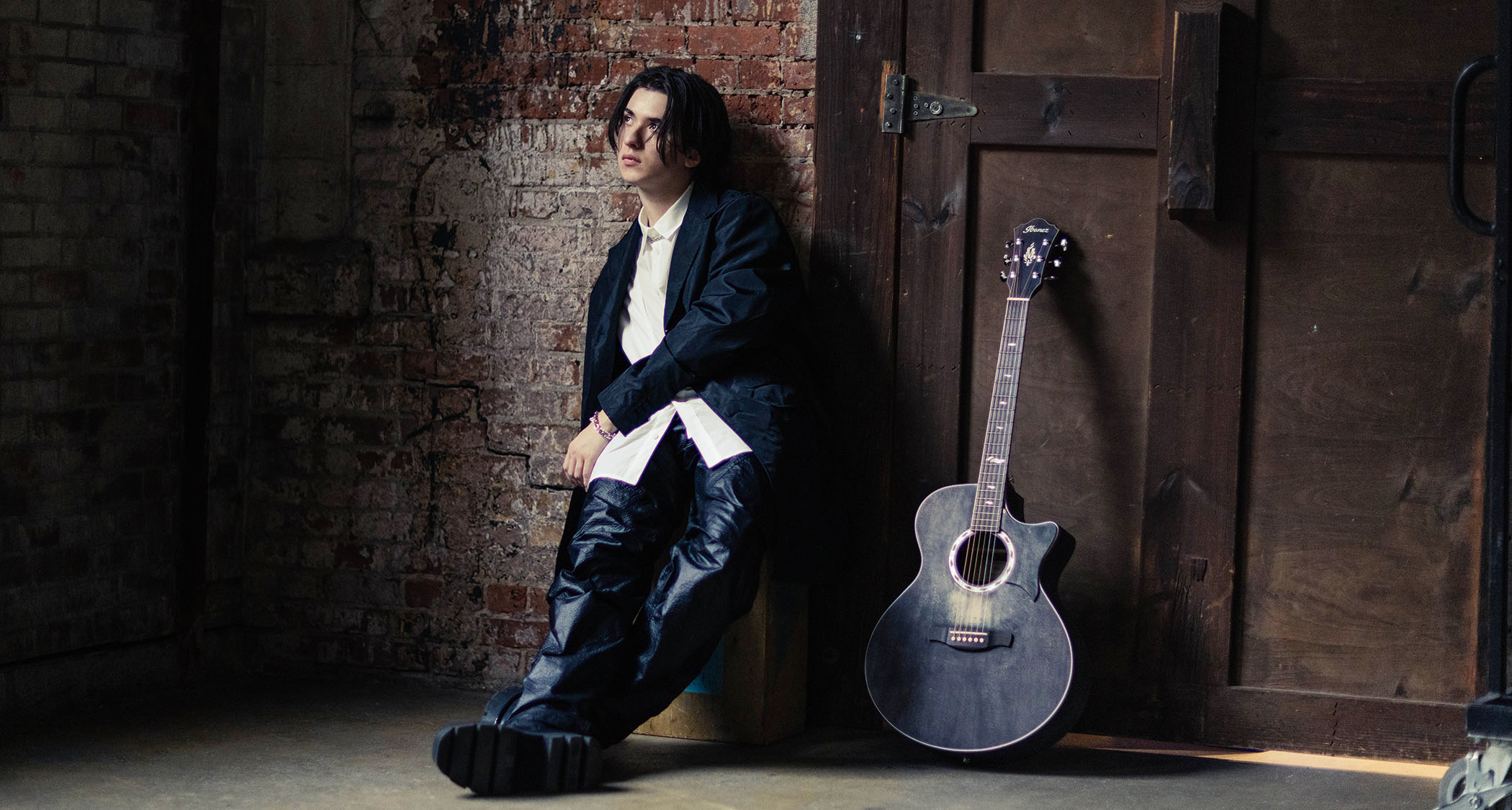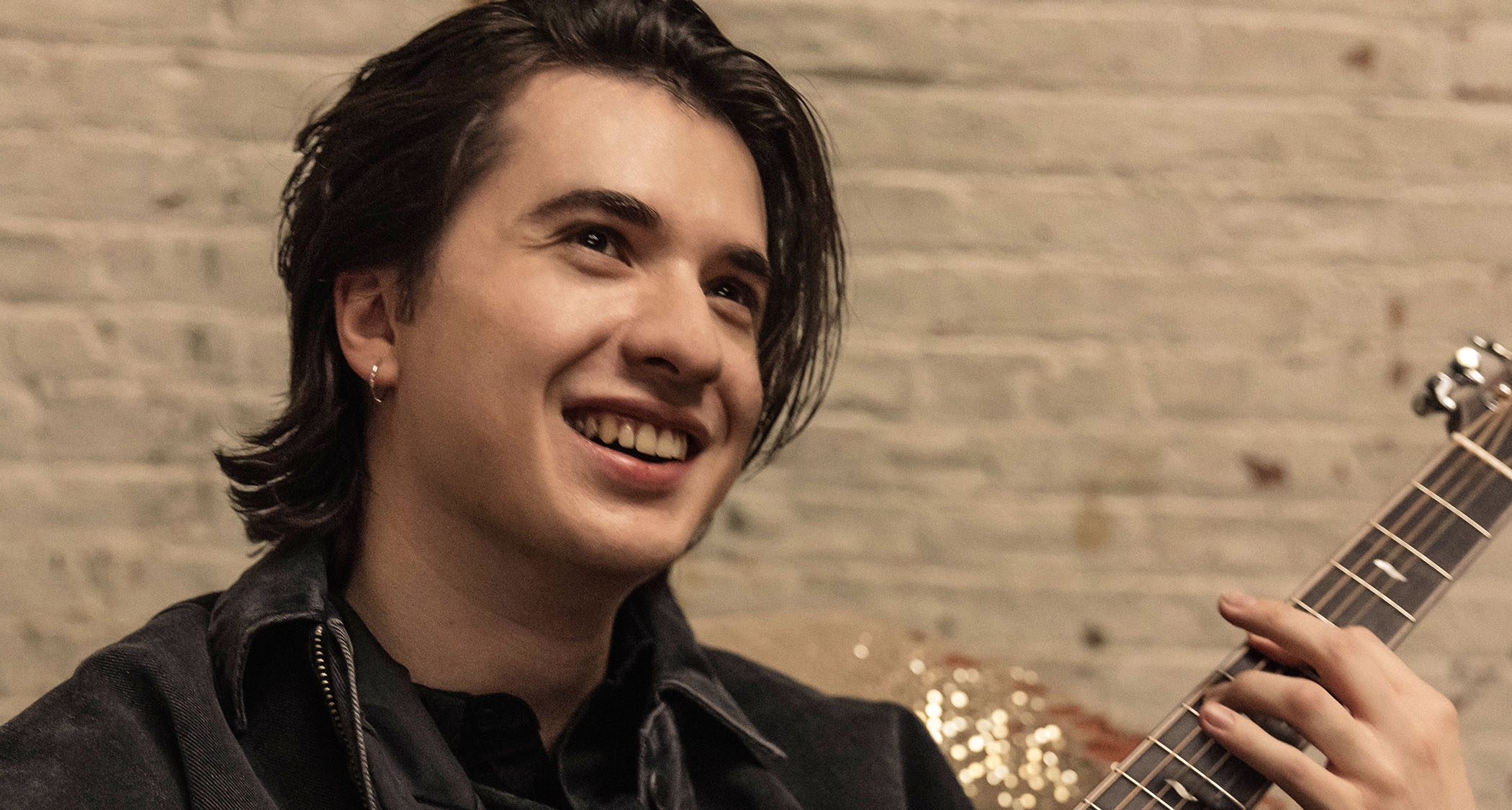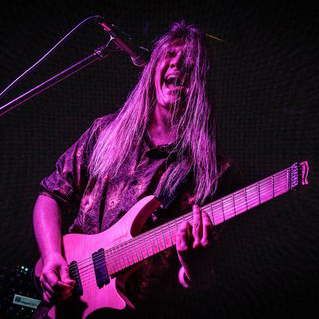“Classical-flamenco percussive playing is not a gimmick – it’s a level-up of the guitar world”: Steve Vai mentored him, Tim Henson lent him his talents, and now he’s invented his own “semi-open” tuning – Marcin is on a mission to redefine acoustic guitar
Flamenco-classical sensation Marcin Patrzalek is in the enviable position of releasing his debut album with millions of fans already in awe of his talents. Now he wants to steal some limelight off the “electric guitar big boys” and showcase the future of the acoustic guitar

At 24 years old, Polish-born Marcin has the world at his feet. Despite his youthfulness, he’s already being wowing audiences with his explosive approach to acoustic guitar for nearly 10 years. His debut album Dragon In Harmony arrives amid wild hubbub for his genre-fusing virtuosity, which sees a classically-trained left hand and flamenco-driven strumming punctuated by dextrous percussive techniques.
Having emerged victorious from TV talent shows in Poland and Italy before his 17th birthday, Marcin reached an even bigger audience during a run to the semi-finals of America’s Got Talent in 2019. Through a host of viral successes, he’s amassed 1.62 million YouTube subscribers.
His takes on the DADGAD stomp of Led Zeppelin’s Kashmir, the romantic melodies of Beethoven’s Moonlight Sonata and the metallic fury of System Of A Down’s Toxicity have over 20 million views, while his original music has captured imaginations, too.
He sees what the “electric guitar big boys” of the modern scene – such as Tim Henson and Ichika Nito – are doing, and he wants to redefine people’s perceptions of the instrument and prove acoustic guitar can be just as cool.
Those guitarists, as well as fan-turned-mentor Steve Vai, Tom Morello and Jack Black have all been left flabbergasted – as has Guitar World, who hailed him as “one of the most talented guitarists of his generation” in 2022. And so, he’s painfully aware that most artists don’t release their debut album under such circumstances.
“It’s a pretty unique position to be in as a percussive player,” he says. “To have a big label [Sony Music] and millions of people who know my name online already. So I want to show the whole spectrum of what I do. This is album is a true expression of where I am at this moment with the vision of what modern percussive guitar can be.”
Marcin’s background, he says, is “purely classical,” having started his studies at 10 years old. “My first teacher was a huge and eccentric character,” he remembers. “He was very direct and very supportive. There is no space in my brain to play any differently with my left hand because he gave me a complete vision.”
All the latest guitar news, interviews, lessons, reviews, deals and more, direct to your inbox!
At 13, he was singled out for one-to-one tuition by a flamenco teacher and university professor in Valencia, “the Mecca of flamenco”. “I was at a workshop, he looked at me and said, ‘I want to teach you on Skype, little boy.’ That was a big deal for me.” He tucked under his tutor’s wing for five years, those experiences transforming his right hand and uniting two traditional styles in the process.
But he isn’t concerned with traditionalism. Discovering Tommy Emmanuel introduced him to the world of percussive playing. It would prove the final piece of his artistic puzzle, designed to inject contemporary energy into the acoustic without discrediting hundreds of years of history.
“They showed me that there were people in the world that didn’t take traditional routes with the acoustic guitar,” he says. “It was so niche. I wanted to be an outsider…”
My flamenco teacher told me to take the metronome to the bathroom with me!
What are the first steps for learning percussive-style acoustic playing?
“The first thing, which is pretty accessible for any guitarist, is to learn tapping with your left hand so that you’re able to produce melodies and basslines very clearly, without weird overtones. It frees up your right hand to do a bunch of fun stuff. You can play the bassline of Asturias [by Isaac Albéniz] with your left hand, and then it’s within the imagination of the player how you use your right hand.
“You could just do a little slap on the bass string and let it ring out – that’s already very much a fully harmonic, different thing that you’re doing. For my right hand, I first looked at easy songs to play, understanding why they work the way they work, and playing it slowly with a metronome.
“People forget about the metronome when they are practicing, then question why it isn’t working for them when the answer is so obvious. My flamenco teacher told me to take the metronome to the bathroom with me!”
Do you have to be good at multi‑tasking to nail this style?
“I honestly don’t believe humans can multi-task. I do not think that’s how our brains work. You can’t consciously perform two things at once. If I played guitar and spoke to you, it will be me doing the muscle memory that I’ve worked out over many years, and I’d just be focusing on what I’m saying.
“Usually, there’s not a little synapse in my brain that’s thinking about what my left hand is doing. What I am thinking about is the right hand, because it’s doing more complex and exciting rhythmic stuff.
“Or if my right hand is just playing a kick drum part, I’ll focus on my left hand. It’s about freeing up space in your brain, not trying to split it. The music is one whole, not a bunch of separate layers.”
How do you make different sounds from the body of the guitar?
“Many people approach it like a drum kit, but what matters is which part of your right hand you use. If you hit the body with your wrist, it produces a very low sound, wherever you hit it. That can be your kick drum.
“If I smack the body with my index finger and my thumb in an L-shape, that’s like a whipping sort of motion and you get a snappy, tight snare thing, even if I hit the same spot on the body as for the kick.
I honestly don’t believe humans can multi-task. I do not think that’s how our brains work
“If I strum the strings past the nut, it can be a nice chimey cymbal, or you can scratch the body of your guitar with nails.
“The big difference is the sides of the guitar. The most common way here is to graze the rim, going towards the sound hole. That’s extremely snappy and very loud. When you’re writing, you’ll see little gaps [in the music] which you can fill with those techniques.”
So how closely do you follow the drum kit analogy?
“When I begin arranging, I don’t actually think about a drum kit. Why would I? Clearly it’s not a drum kit, it’s an instrument in its own right, but it’s a nice graphic way to think about it.
“That’s why I play with a drummer live, and on my album I use a lot of layering with the cajon and different samples. It would be arrogant to substitute everything with guitar parts. You can do both. Nobody’s stopping you from playing percussive-style acoustic with a drummer.”
You’re seen using a rasgueado technique on the body of the guitar sometimes, too.
“That’s a direct result of flamenco, and I’ve seen a lot of parodies of myself online because I do it so much! The pattern of motion will be ring finger, index, thumb, or ring, middle, index, and it’s like doing a flam on the body like you would on a snare. I like to bring my right hand strumming techniques into the percussive side of my playing.”
What is your approach to playing covers in your style?
“For any person who wants to start arranging songs for solo guitar, at the beginning you should try to mirror the original song. You can hear what the different parts and instruments are doing. It will be a pretty direct translation, but then you’ll be forced to make some sacrifices because of course you can’t do everything on your own.
I found covering songs like that to be very un-artistic after a while. I was kind of a living CD player
“That’s where the fun and beauty kind of comes in – you need to find cool ways to overcome the limits of solo guitar. But I found covering songs like that to be very un-artistic after a while. I was kind of a living CD player.
“Eventually, I stopped attempting to recreate songs like that and tried to breathe new life into the music – to see it as a new thing. Now, when I decide I’m going to rearrange something, I don’t listen to it too much, especially if I already know it well. I don’t think you’re forced to respect any original when you’re covering it.
“It’s about originality. It’s a different brain and heart playing the same music. So with my Cry Me A River cover, there’s a whole Brazilian bossa nova section in there. There’s no connection to the original until I bring the melody over the top. You’re free to experiment.”

You often strum over the fretboard. Is that for tone or practicality?
“It’s more practical. My right hand especially is very mobile. I like to say that I travel in circular motions to keep it fluid and so my hand always returns home naturally. So if I’m tapping with both hands, it’s practical to be there and also the scratchpad starts around the 17th fret.”
Are open tunings better for this style?
“That’s personal preference. I definitely love open tunings, but I’ve been experimenting with semi-open tunings which I’ve never seen anybody do before. It’s a tuning I used in Classical Dragon and I Don’t Write About Girls – I call it B5 standard.
“The low three strings are a B5 chord (B F# B) and then the top strings are in standard (G B E). You can improvise and play freely on the top strings as it’s familiar, but then the low strings are beefy as hell and you can make Animals As Leaders bass sounds.”
Speaking of Classical Dragon, how did Polyphia’s Tim Henson end up featuring on that track?
“Classical Dragon is actually a very old song. I started writing it around 2020. My goal at that time was to get out of the fingerstyle box and try to join forces with the big boy electric players without just copying them. No-one was trying that sort of thing from my lane. Tim started following me on Instagram and I was like, ‘Okay, how can I entice him to join me on a song?’ So I definitely wrote it with him in mind.
“It’s Polyphia-esque, I’m not afraid to admit that. It had a lot of 808s and trap-y hi-hats. I sent Tim a cold message asking him about the song – back then I was a fraction of who I am now. He got back to me pretty quickly, like, ‘This is sick, we should do something on it together!’
“The part he sent over was amazing. It’s totally different to anything he’s ever done, I think, and that inspired me to change up the song to make it more Marcin. I spent a lot of time reworking it afterwards. I’m absolutely in awe with what he’s doing, so having him on the song was an unbelievable experience.”

There’s a lot of tapping in that song. What’s your approach to those parts?
“It’s a complex approach that I’ve grown into, and it’s not a few like tidbits. Classical pieces especially can be quite meaty in terms of harmony, but usually my tapping outlines a chord rather than arpeggios in a typical sense. I usually don’t go up and down in steps. I use a lot of open strings, too.
“If I’m tapping with my left hand and maybe using one or two fingers on my right hand, I can use the remaining fingers to play open strings. Suddenly, you can make these harp-like structures with a lot of notes ringing out.
“You can see that on my take of Paganini’s Caprice no. 24, [around the 1:27 mark] there’s a slower, more open variation of the piece. Basically, I tried to play these descending scales, but do it in a way where as many notes ring out as possible. It’s a nice, legato flurry-type thing. I love doing it.”
Does the type of guitar matter for percussive playing?
“Some are better than others, but you can play percussively on any acoustic. If you couldn’t it would be a gimmick, needing some extra attachments. A good percussive player could play the same stuff on Taylor Swift’s guitar and on mine.
“The things you can change with DIY are more for comfort. I find low action absolutely key for tapping, especially ghost taps, which I do a lot as it makes the sound a lot bigger. The low action gives you less ring out, so it’s easier to play cleanly.
“The scratchpad is the most visual addition and on my [signature Ibanez] MRC10 it’s a very special one [made from oil-finished, solid Sitka spruce], but you can just wing it. You can scratch your nails on the body; especially if it doesn’t have polish.”
With you hitting the guitar so much during your live shows, do your hands hurt afterwards?
“No. If something hits and remains there, there’s a prolonged impact. But if it’s a little slap and you move your hand away, you’ll produce vibrations and you’re not going to damage yourself or your guitar. Buildings vibrate all the time – that’s how Japan survives earthquakes.
“The only issue you can have is when you play a kick drum with your wrist, as you do leave it on the body guitar a little longer because you don’t want the vibrations the same. That can damage the guitar, but you can add a plate to reinforce the bracing.
“I don’t think it matters what it’s made of, but with the MRC10 I used solid Sitka spruce because I wanted the material to be as natural as possible and match the guitar.”
Steve Vai has been mentoring you, too.
“He’s the beam of light in the world of guitar. He’s been encouraging – very directly and exhaustively, I would say. He’s very articulate and in-depth with his opinions and advice. He came by my LA show recently and we had an hour-long conversation backstage. He wants you to succeed and be the best version of yourself.”
You’ve said previously that you want the percussive acoustic to be the next big thing. Are you seeing more players embracing this approach to the instrument?
“What I’ve seen over the past two or three years is that the level of the covers and arrangements of people doing this flamenco percussive thing has gone through the roof. After Classical Dragon came out, there were covers online in three days.
“So I think, now, it’s less of one person carrying the torch for this style. There’s a collective understanding that this classical-flamenco percussive way of playing exists. It’s not a gimmick – it’s a pure level-up of the guitar world.”
- Dragon In Harmony is released on September 13 via Sony Classical.
A freelance writer with a penchant for music that gets weird, Phil is a regular contributor to Prog, Guitar World, and Total Guitar magazines and is especially keen on shining a light on unknown artists. Outside of the journalism realm, you can find him writing angular riffs in progressive metal band, Prognosis, in which he slings an 8-string Strandberg Boden Original, churning that low string through a variety of tunings. He's also a published author and is currently penning his debut novel which chucks fantasy, mythology and humanity into a great big melting pot.









